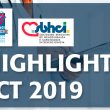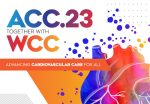Courtesy of SBHCI. This interesting study presented at TCT 2019 and simultaneously published in Am J Cardiol tells us PCI in stable coronary artery disease cannot lower risk in patients with severe aortic stenosis undergoing transcatheter aortic valve replacement (TAVR). Unless patients are symptomatic, most coronary artery lesions do not need revascularization according to researchers.<a href="https://solaci.org/en/2019/10/10/tct-2019-pci-in-stable-cad-prior-tavr-with-tavr-or-never/" title="Read more" >...</a>
ESC 2019 | New European Guidelines on “Chronic Coronary Syndromes”
In Paris, during the European Society of Cardiology (ESC) Congress 2019 Scientific Sessions, new guidelines for the diagnosis and treatment of chronic coronary syndromes were presented. This document, simultaneously published in Euro Heart J, updates the 2013 guidelines on stable ischemic heart disease and takes out the word “stable” so as to emphasize that the<a href="https://solaci.org/en/2019/09/05/esc-2019-new-european-guidelines-on-chronic-coronary-syndromes/" title="Read more" >...</a>
Mechanisms of Post PCI Persistent Angina
Angina persistence or recurrence after PCI can affect between 20 to 40% of patients in the short and mid-term. This might be true despite PCI optimization using FFR, intravascular ultrasound and the latest generation stents. This problem is associated with high healthcare cost, which can double in patients with recurrent or persistent angina compared against<a href="https://solaci.org/en/2019/08/22/mechanisms-of-post-pci-persistent-angina/" title="Read more" >...</a>
Safety of Lesion Deferral with iFR or FFR in Both Stable and Acute Patients
Overall, deferral of lesion revascularization is equally safe with both fractional flow reserve (FFR) and instantaneous wave-free ratio (iFR), with a low rate of events of about 4%. Lesions were more frequently deferred when iFR (as opposed to FFR) was used for functional assessment. Among patients with deferred lesions, acute patients experienced significantly more events<a href="https://solaci.org/en/2018/10/19/safety-of-lesion-deferral-with-ifr-or-ffr-in-both-stable-and-acute-patients/" title="Read more" >...</a>
DEFINE FLAIR and IFR SWEDEHEART: Safety in Revascularization Based on FFR and iFR in Both Stable and ACS Patients
The safety of physiology-based coronary revascularisation has been supported by evidence for years now. DEFER (1998-2001) was one of the first related studies. However, major changes in device and medical treatment safety and efficacy have taken place since then. This could affect clinical results, particularly as regards acute coronary syndromes (ACS). Several studies have cast<a href="https://solaci.org/en/2017/05/23/define-flair-and-ifr-swedeheart-safety-in-revascularization-based-on-ffr-and-ifr-in-both-stable-and-acs-patients/" title="Read more" >...</a>
SIGNIFY: Ivabradine does not reduce events in patients with stable coronary disease
The increase in heart rate in the setting of chronic coronary artery disease is associated with poor prognosis, especially increased risk of acute myocardial infarction. Reducing heart rate with ibravadina inhibitor may confer symptomatic benefit of angina and reduce coronary events in patients with chronic coronary disease and a resting heart rate ≥ 70 bpm.<a href="https://solaci.org/en/2015/06/24/signify-ivabradine-does-not-reduce-events-in-patients-with-stable-coronary-disease/" title="Read more" >...</a>
Coronary angioplasty reduces the risk of spontaneous myocardial infarction in chronic stable patients.
Original title: Percutaneous Coronary Intervention Versus Optimal Medical Therapy for Prevention of Spontaneous Myocardial Infarction in Subjects With Stable Ischemic Heart Disease. Reference: Sripal Bangalore et al. Circulation. 2013;127:769-781 In the context of coronary angioplasty complications may arise, such as a periprocedural infarction. However, this event does not have the same clinical consequences compared to a spontaneous infarction. <a href="https://solaci.org/en/2013/02/26/coronary-angioplasty-reduces-the-risk-of-spontaneous-myocardial-infarction-in-chronic-stable-patients/" title="Read more" >...</a>
The most read scientific articles in interventional cardiology in March on our website
Below, we share March’s most read scientific abstracts in interventional cardiology at solaci.org. ACC 2023 | YELLOW III Study. Effect of Evolocumab on Coronary Plaque Characteristics in Stable Coronary Artery Disease Dr. Kini presented the results of the YELLOW III Study where she analyzed the effect of evolocumab on coronary plaque in patients with stable<a href="https://solaci.org/en/2023/04/13/the-most-read-scientific-articles-in-interventional-cardiology-in-march-on-our-website/" title="Read more" >...</a>
AQCA Study: Pre-PCI Virtual QFR for Planning PCI vs. Conventional Angiography
Several studies have used physiological assessment after a percutaneous coronary intervention (PCI) to improve clinical outcomes. However, results are not entirely conclusive. The limitations of using these physiological assessment methods are the need for extra measurements with increased procedure time, more radiation, and more contrast, which in turn leads to higher costs. To counteract these<a href="https://solaci.org/en/2023/04/05/aqca-study-pre-pci-virtual-qfr-for-planning-pci-vs-conventional-angiography/" title="Read more" >...</a>
ACC 2023 | Subanalysis of the REVIVED-BICS Study2
This study demonstrated that coronary angioplasty does not entail any benefit in chronic stable angina over optimal medical therapy in those with impaired ventricular function (EF >35%) with extensive coronary artery disease and viable myocardium. Dr. Divaka Perera performed a subanalysis of said study. At the time of the study, the amount of viability and<a href="https://solaci.org/en/2023/03/08/acc-2023-subanalysis-of-the-revived-bics-study2/" title="Read more" >...</a>









